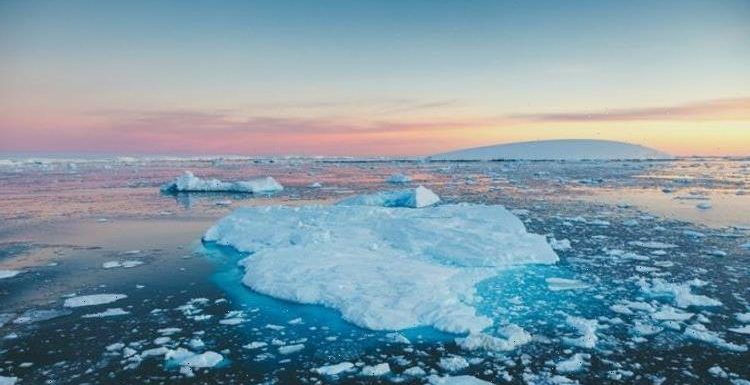
Antarctica: Scientists find area where no life exists
We use your sign-up to provide content in ways you’ve consented to and to improve our understanding of you. This may include adverts from us and 3rd parties based on our understanding. You can unsubscribe at any time. More info
In what has been dubbed an “oasis of life”, it is spectacular that there is evidence of a marine ecosystem dating back 6,000 years. The conditions beneath the Antarctic ice shelves are harsh, being extremely cold, perpetually dark and food sources are almost non-existent. That is why finding life there was surprising.
Among the life found there were sabre-shaped moss animals and unusual worms.
The researchers from the Alfred Wegener Institute (AWI) in Germany drilled two holes through nearly 656ft (200 metres) of the Ekström Ice Shelf near Neumayer Station III in the South Eastern Weddell Sea back in 2018.
Even though the area is several miles from the open sea, the biodiversity of the specimens that the researchers collected was very rich.
In fact, it was even richer than a lot of open water samples found on the continental shelf where it is lighter and there are more food sources.
The researchers said that fragments of life collected on the seabed were extraordinary and came as a complete surprise.
Dr David Barnes, a marine biologist at the British Antarctic Survey and lead author of the study, said: “This discovery of so much life living in these extreme conditions is a complete surprise and reminds us how Antarctic marine life is so unique and special.


“It’s amazing that we found evidence of so many animal types, most feed on micro-algae (phytoplankton) yet no plants or algae can live in this environment.
“So the big question is how do these animals survive and flourish here?”
The research team worked out that there is likely enough algae that has been carried under the ice shelf from open water to fuel a strong food chain.
Surprisingly, microscopy of samples showed that the annual growth of four of the species was comparable with similar animals in open marine Antarctic shelf habitats.
Co-author Dr Gerhard Kuhn (AWI), who coordinated the drilling project, said: “Another surprise was to find out how long life has existed here.
“Carbon dating of dead fragments of these seafloor animals varied from current to 5,800 years.
“So, despite living 3-9km (1.8-5.5 miles) from the nearest open water, an oasis of life may have existed continuously for nearly 6,000 years under the ice shelf. “

“Only samples from the seafloor beneath the floating ice shelf will tell us stories from its past history.”
While they occupy almost 618,000 square miles (1.6 million km2), ice shelves are one of the least understood environments on the planet.
Life in these cold and still habitats has rarely ever been collected.
DON’T MISS
Solar storm warning: Two major solar flares to be fired from Sun [REVEAL]
Pompeii breakthrough as remains of ‘vaporised’ man found [REPORT]
Putin caves as EU checkmates Russia [INSIGHT]


And now, with global warming causing the accelerating change and collapse of these ice shelves, time is running out to study and protect these ecosystems.
The study has been published in the journal Current Biology.
Source: Read Full Article